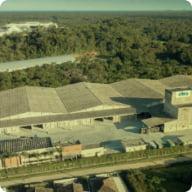It is a cofactor in enzymatic reactions and, therefore, participates in several biochemical cycles of plants, including photosynthesis and sugar formation, protein synthesis, fertility and seed production, growth regulation and defense against diseases.
Deficiency – Affects biochemical functions, preventing the plant from developing properly. This results in crops with poorer quality and lower yields. Zinc-deficient plants have small, distorted leaves, with shortened shoots and agglomeration of leaves in the growing region. The plants also have a chlorophyll deficit, causing the leaves to become lighter and even white. In the case of zinc deficiency, this discoloration occurs near the veins, they may also have dead parts and bronze spots.
These foliar deficiencies are found in both old and new leaves, unlike other nutrient deficiencies. Zinc (Zn) deficiency can also be detected at the cellular level, through malformation of organelles such as chloroplasts and mitochondria. The absence or deficiency of this element can also cause problems in cell division and twisted roots with enlarged tips.














